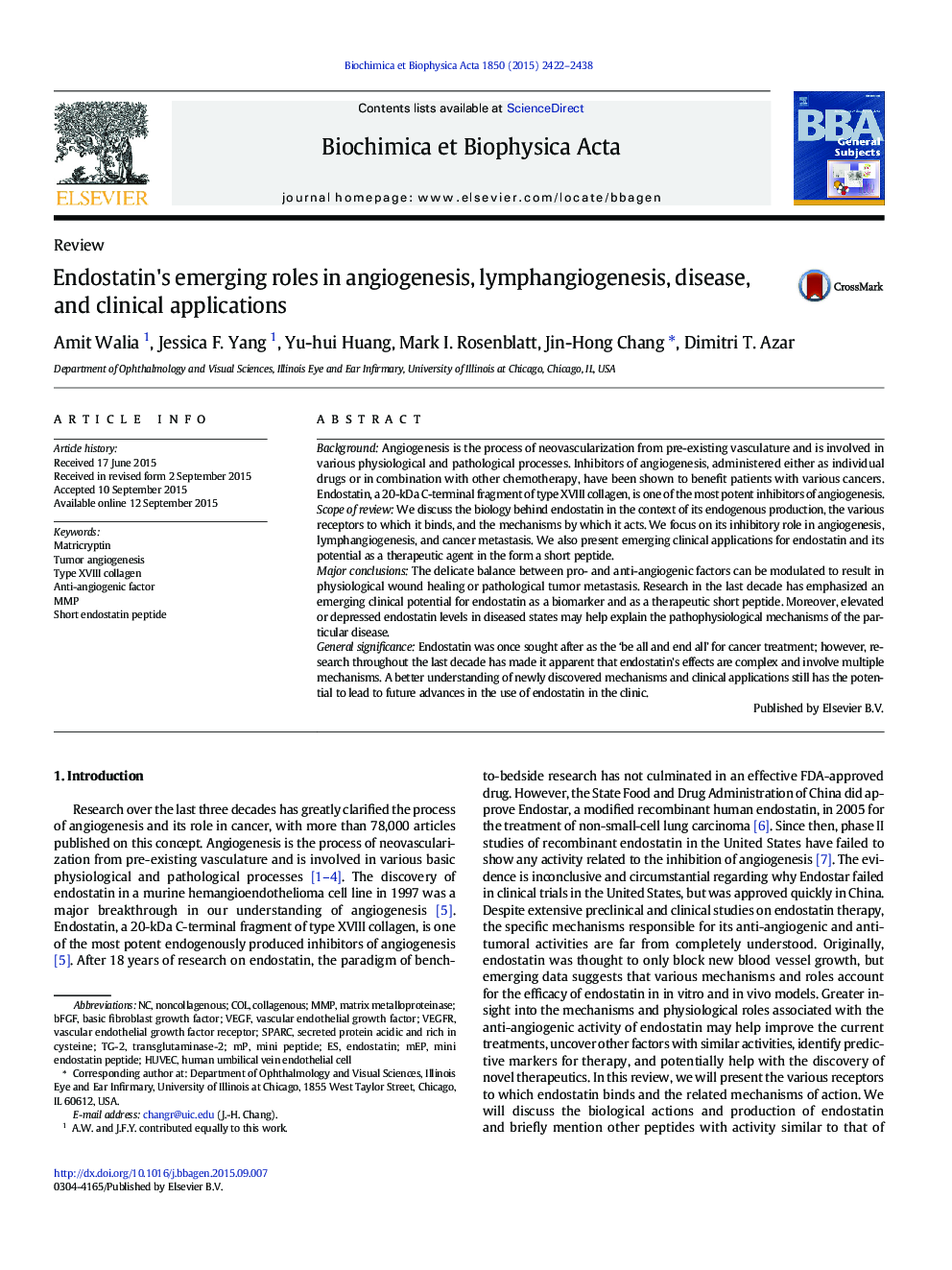| Article ID | Journal | Published Year | Pages | File Type |
|---|---|---|---|---|
| 1947366 | Biochimica et Biophysica Acta (BBA) - General Subjects | 2015 | 17 Pages |
•Endostatin is located at the C-terminal end of type XVIII collagen.•Endostatin has anti-angiogenic, anti-lymphangiogenic and anti-tumorigenic activity.•Other matrikines also exhibit anti-angiogenic and anti-tumorigenic activity.•Various recently discovered receptors bind endostatin to induce widespread effects.•Endostatin's therapeutic potential as a short peptide or biomarker is promising.
BackgroundAngiogenesis is the process of neovascularization from pre-existing vasculature and is involved in various physiological and pathological processes. Inhibitors of angiogenesis, administered either as individual drugs or in combination with other chemotherapy, have been shown to benefit patients with various cancers. Endostatin, a 20-kDa C-terminal fragment of type XVIII collagen, is one of the most potent inhibitors of angiogenesis.Scope of reviewWe discuss the biology behind endostatin in the context of its endogenous production, the various receptors to which it binds, and the mechanisms by which it acts. We focus on its inhibitory role in angiogenesis, lymphangiogenesis, and cancer metastasis. We also present emerging clinical applications for endostatin and its potential as a therapeutic agent in the form a short peptide.Major conclusionsThe delicate balance between pro- and anti-angiogenic factors can be modulated to result in physiological wound healing or pathological tumor metastasis. Research in the last decade has emphasized an emerging clinical potential for endostatin as a biomarker and as a therapeutic short peptide. Moreover, elevated or depressed endostatin levels in diseased states may help explain the pathophysiological mechanisms of the particular disease.General significanceEndostatin was once sought after as the ‘be all and end all’ for cancer treatment; however, research throughout the last decade has made it apparent that endostatin's effects are complex and involve multiple mechanisms. A better understanding of newly discovered mechanisms and clinical applications still has the potential to lead to future advances in the use of endostatin in the clinic.
